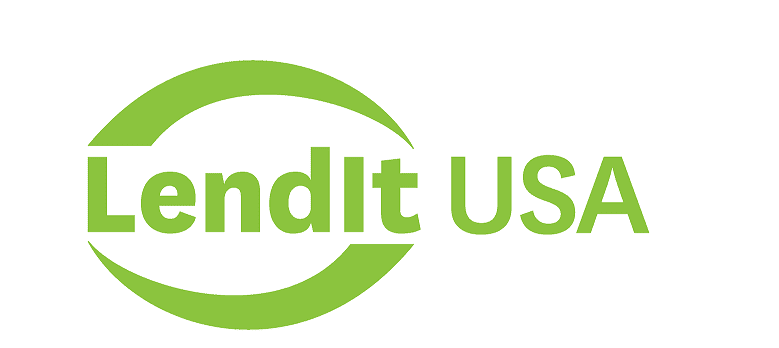SMALL BUSINESS
INVENTORY
FINANCING
Lower costs & higher funding limits for your small business
Kickfurther funds up to 100% of your inventory costs on flexible payment terms where you don’t pay until you sell. We fund your entire order(s) each time you need more inventory, so you can put your capital to work growing your small business without adding debt, giving up equity or locking up cash in inventory orders.
- Often 30% lower cost than alternate lenders
- Quickly fund $5,000,000+ in inventory for your Shopify store
- Create your payment schedule (1-10 months)
- Sell new inventory before paying for it
Frequently asked Inventory financing options for small business questions
Scaling a small business can be challenging. And raising funds to aid in that growth can be one of the most taxing aspects. Without proper funding, you can struggle to invest in growth strategies like expanding your product line, increasing your marketing efforts, and hiring additional talented individuals. Identifying financial resources to help fuel your expansion can ensure you get and stay on a growth trajectory.
What is small business inventory financing?
The simplest way to summarize the solution inventory financing provides is that funding inventory often costs a lot of money and you need money to do it. Inventory financing provides it. The funding provider supplies the capital to fund the inventory and you repay them later during or after selling the goods. Like any financial solution, there are a few ways companies structure this funding, but the important feature and their main commonality is this: the inventory you buy is the collateral for the loan.
What are inventory loans for small businesses?
Inventory loans provide the money you need to fill your shelves by giving you a business line of credit or, a short-term loan, or payment in full to your manufacturer on your behalf for inventory. If you receive money directly, funding is limited to the use of purchasing inventory , and the funded amount is calculated based on what you pay your suppliers to produce the inventory. Should something unforeseen occur and you’re unable to repay the funding, the finance company has the right to seize the inventory as repayment of the loan balance.
How does small business inventory financing work?
Because the inventory is the collateral, many traditional inventory loan providers do not give you 100% of its value; instead they factor in the likely value they would receive for the inventory should they need to repossess it as payment. Because Their liquidation valuation will be less than the market value, lenders will offer you between 50% and 80% of the total inventory cost.
What you are buying will affect the actual figure. If your inventory has a limited shelf life or is likely to have a low resale value, you will be offered less than if it is a premium product. In fact, if your inventory does have little likelihood of retaining value, you may find inventory financing difficult to come by and will likely need to use an alternative funding source.
You’re likely to find that inventory funding providers can vary widely. Some only fund loans starting at $500,000, which is rather more than most small businesses immediately need. Other lenders offer funding beginning at lower levels to accomodate all business needs and types. To qualify, funding partners will likely review your financial records and supply chain, possibly including your storage facilities.. If that sounds strange, it’s really not for this type of funding, though you should consider these all things that may occur and not actions guaranteed to be a part of your experience.
If you are in the earliest stages of a startup, some types of inventory funding may not work for you as funding institutions will typically require a track record of some type for this form of funding. However, there are a number of resources to help get businesses off the group, including crowdfunding for new products, peer-to-peer lending, angel investors, or government loans. Remember, what that required “track record” means differs between institutions, so don’t assume you’ll be unable to work with other partners if you don’t qualify for another. Typically a year in business begins to open many doors, but many also work off revenue, so even if you’re young but growing revenue quickly, they may be able to help.
Why do small businesses apply for inventory financing?
Inventory financing, as the name implies, can be used by businesses that deal with tangible products. These include product-based businesses that experience high inventory turnover rates. In general, inventory financing loans are sought after by small businesses that have exhausted other options to acquire additional funding. And, since inventory financing is easier to qualify for, many businesses that experience great inventory turnover rates such as retailers, restaurants, distributors, and wholesalers opt to take out an inventory financing loan to meet their financing needs.
Is inventory financing right for your business?
As a small business owner, having an understanding of the different financing options you can avail of is useful in case your business becomes strapped for cash. The reality is that almost all businesses experience some sort of cash flow issue at some point in their entrepreneurial journey. Whether you’re trying to acquire additional funding to restock inventory or get ahead of a busy sales season, it’s important to understand that inventory financing can provide you with the capital that you need especially if you find it difficult to secure other more traditional types of loans. Fortunately, an inventory financing loan will help you cover your inventory procurement needs without the strict requirements that other financial products may have
What are my options for inventory financing for small businesses?
There are two main types of inventory financing: a loan where you receive a lump sum, or a business line of credit.
- A business line of credit works much like a credit card. The lender agrees a maximum sum it is prepared to lend, and you can borrow against that amount when buying inventory. Important things to remember about this are:
- As you make the regular repayments, the money will be re-available to you to purchase more inventory.
- You only pay interest on the outstanding amount. For instance, if your credit limit is $100,000, but you only buy $60,000 of inventory, you only pay interest on that $60,000, not the full $100,000.
- You cannot use this money for any other purpose than inventory.
- The other type of inventory financing offered by some lenders is the short-term loan. Very much like a traditional bank loan, the lender pays you a lump sum to purchase your inventory, which you pay back, plus interest, with regular repayments. Terms are usually short, with a maximum often of 12 months.
The business line of credit in this instance is often more sought-after, but can be harder to secure for younger businesses. A short-term loan is often a route for most businesses, and many inventory financing companies will be happy to work with you again once you’ve paid off your first loan.
What are the pros for using inventory financing for your small business?
There are three main benefits for the retail business owner involved with inventory loans:
- Inventory financing allows you to react to changes in the marketplace quickly and easily. It means being able to pounce on business opportunities to capitalize on demand that outpaces your supply and allows your business to be fluid in its inventory acquisition. The ability to follow and anticipate trends, and take advantage of bulk buying discounts, can boost profitability by eliminating costly stockouts and by improving your margins through those discounts.
- Your cash flow remains unaffected by your inventory purchasing. This means you can concentrate on running the business free from worry about seasonality or how to afford the other investments your company needs to make to scale operations. The result is that your business will be better positioned to accelerate growth.
- Many other forms of finance require the owner to guarantee the loan. Having your house and car on the line if your business suffers a downturn causes anxiety for many. Sure, you trust your business to continue its success, but retail is a challenging sector with pressures from many sources. Who really knows what’s around the corner. With inventory loans, the worst that can happen is that the inventory is seized and liquidated. You may not want this to happen, but that’s a far better outcome than losing your home.
What are the cons for using inventory financing for your small business?
- Applying and getting accepted for an inventory loan is sometimes a long process, and some inventory financing lenders require a tour of your facilities before they are willing to lend you money. The essence of commerce often requires rapid reactions, and months of delay could prove costly to rapidly developing opportunities.
- If your credit score is not great or your business’s financial records are up and down or very young, you may not qualify for inventory financing. Or, if you do, it may be particularly expensive.
- Short-term lending and the risks involved in inventory financing mean that some lenders impose high rates of interest. This is not always the case, but you should choose your provider with care.
How to Qualify for Small Business Inventory Financing
Because the inventory acts as collateral for the loan, qualifying for inventory financing may not be as difficult as qualifying for long-term bank loans and SBA loans. That’s not to say that a good credit score and proven profitability are not necessary, however. The better those are, the better and cheaper finance you will be able to secure. Most finance companies will want the following:
- There will always be a credit check for the business and the owner(s).
- They will ask for financial statements to check your sales and revenue.
- Many traditional lenders may ask to see a business plan illustrating how you expect your business to grow.
- They will require a detailed list of exactly what inventory you are buying with the money, often including pricing of those goods.
- They may want to inspect your facilities to see that your inventory will be stored properly.
These are the basics; they may need more records and checks. As you can guess, the higher the amount you want to borrow, the more requirements you’ll be asked to meet.
How to Apply Inventory Financing for Small Businesses
The application process for inventory financing varies from lender to lender. At traditional loan providers, you may expect significant paperwork, a lengthy approval process and an inspection of your premises, storage and inventory management system.
By contrast, many online lenders make a feature of simplifying the process allowing you to get your hands on the cash within days – sometimes in just hours.
You likely know best if inventory funding works best for your needs. Of course, all loans carry costs, but are often a crucial element in a growing company’s success, and can often be seen as a bridge to increasing revenue. Choosing your loan provider may require reviewing multiple options, but it is a process you should embrace to return the right match for your business. The right provider will allow your business to run more smoothly with the funding you need.
If your business operates in a position where additional inventory and the working capital to invest in growth would help your company grow, Kickfurther inventory funding may be a good match.
Meet Kickfurther
Kickfurther funds up to 100% of your inventory costs on flexible payment terms that you customize and control. With Kickfurther, you can fund your entire order(s) each time you need more inventory and put your existing capital to work growing your business without adding debt or giving up equity.
Why Kickfurther?
No immediate repayments: You don’t pay back until your new inventory order begins selling. You set your repayment schedule based on what works best for your cash flow.
Non-dilutive: Kickfurther doesn’t take equity in exchange for funding.
Not a debt: Kickfurther is not a loan, so it does not put debt on your books. Debt financing options can sometimes further constrain your working capital and access to capital, or even lower your business’s valuation if you are looking at venture capital or a sale.
Quick access: You need capital when your supplier payments are due. Kickfurther can fund your entire order(s) each time you need more inventory.
Kickfurther puts you in control of your business while delivering the costliest asset for most CPG brands. And by funding your largest expense (inventory), you can free up existing capital to grow your business wherever you need it – product development, advertising, adding headcount, etc.
Key Takeaway/Final Thoughts
At the end of the day, whether you’re considering inventory financing or other types of loans, it’s important to do your research and determine which financial product will give you the best loan rates and terms. Choose a financing option that not only offers competitive interest rates but also aids you in achieving your business goals.
Where you've seen us


- Create Your online account Create a business account, upload your business information, and launch your deal
- Get funded within minutes to hours Once approved, our community funds most deals within a day, often within minutes to hours, so you’ll never miss another growth opportunity.
- Control your payment schedule We pay your manufacturer to produce inventory. Make the introduction and you’re off and running! Outline your expected sales periods for customized payment terms. At the end of each sales period, submit sales reports and pay consignment profit to backers for each item sold.
- Complete and repeate Complete your payment schedule and you’re done! Often once the community knows you, you’re likely to get lower rates on your next raise.
See Who Else We’ve Helped
Frequently asked questions
Not seeing your questions here? Please feel free to reach out!
How does pet small business inventory financing work with Kickfurther?
Small businesses can access funding for new inventory (or can get reimbursed for recently produced goods) from marketplace participants. The marketplace allows brands to access private funding at costs that can improve with each use. Your small business funding goes directly to your manufacturer for production of goods and you make no payments until you receive and begin selling new inventory.
What is required for small businesses to get funding with Kickfurther?
You must sell a physical product to get funded on Kickfurther. Your business must be compliant with State and Federal regulations and have an established track record of sales. Kickfurther is for inventory financing so you must have a physical product. Finally, all businesses are subject to approval by the Kickfurther quality team.
What are the requirements to qualify for small business financing with Kickfurther?
Your small business must be compliant with State and Federal regulations and have an established track record of sales. Kickfurther is for inventory financing so you must have a physical product. Finally, all businesses are subject to approval by the Kickfurther quality team.
How can I create a Kickfurther co-op for my small business?
- Launching a Co-Op for your small business involves 3 key steps:
-
- Create a basic profile including information about your business and product line. Once you’ve done this you can go live with an “upcoming Co-Op” profile that users can choose to follow to hear when your Co-Op launches.
- Determine your Co-Op structure using the Kickfurther calculator to determine costs, earnings, and timeline.
- Verify your Credibility Metrics with the Kickfurther team and finalize your Co-Op profile.
Does Kickfurther fund all deals?
Your business must be compliant with State and Federal regulations and have an established track record of sales. Kickfurther is for inventory financing so you must have a physical product. Finally, all businesses are subject to approval by the Kickfurther quality team,


